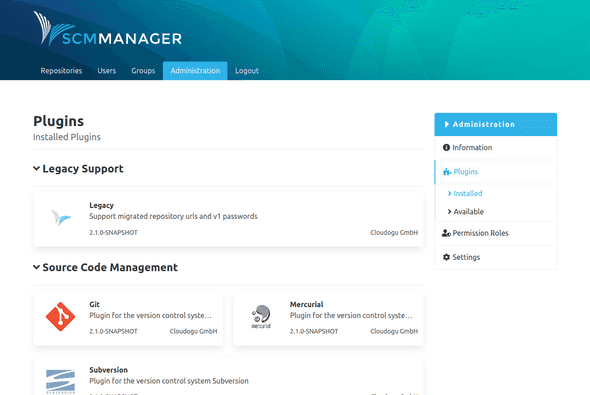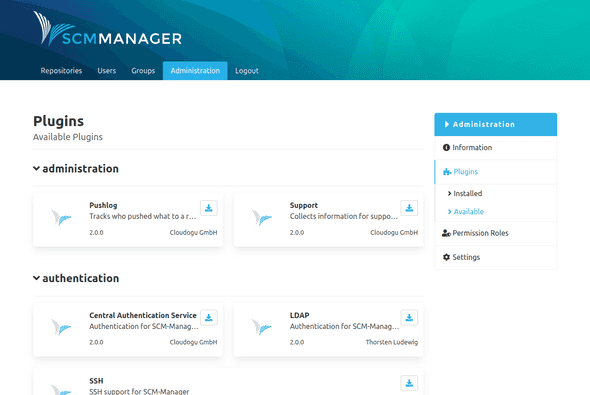Administration
Plugins
In the plugins section, plugins for SCM-Manager can be managed with the help of the external plugin center. Plugins are distinguished between installed and available plugins. They are grouped based on their main functionality like for example workflow or authentication.
Plugins can be managed by action icons on the tiles. System relevant plugins that come with SCM-Manager by default cannot be uninstalled or updated.
In order for changes to plugins to become effective, the SCM-Manager server needs to be restarted. That can be done after every single action. It is also possible to queue several actions like the installation of a new plugin, updates or the deletion of a plugin and to perform all actions with one restart. If an action (installation, uninstallation, update) for a plugin was performed, the buttons "Execute changes" and "Abort changes" appear. If you choose to execute the changes, a popup window that shows the current queue (all actions without a restart) appears. Now the user can decide whether to execute the changes by restarting the server. If there are actions in the queue that are no longer desired, the queue can be emptied with the abort changes button.
Installed
The overview for installed plugins shows all plugins that are currently installed on the SCM-Manager instance. Optional plugins can be uninstalled or updated here.

Available
The overview of all available plugins shows all plugins that are compatible with the current version of the SCM-Manager instance that are available through the SCM-plugin-center. The plugins can be downloaded by clicking on the icon and will be installed after a restart of the SCM-Manager server.

Manual Installation
Plugins are packaged as smp files. To install a plugin using such a file, simply copy it to the plugins
folder in your scm home directory (you should find directories for other plugins there, for example scm-git-plugin).
The server will find these files on startup and finish the installation. Keep in mind though, that manual installation
might have some risks, because the server cannot check for missing dependencies to other plugins or other requirements
beforehand, and therefore the startup may fail. So keep an eye on your log if you choose this way.
To remove a plugin, simply delete the directory created by the server for this plugin. Here, too, one has to be cautious, because other plugins may depend on this plugin. The so-called core plugins (git, mercurial, svn und legacy) cannot be deleted.